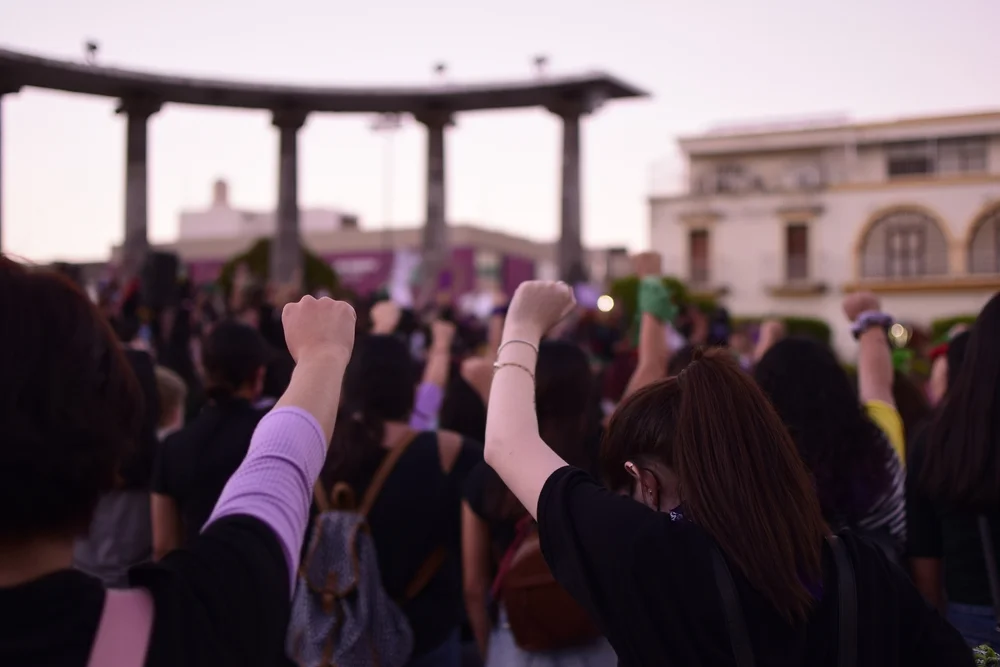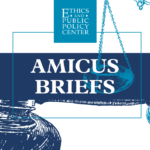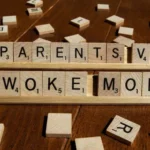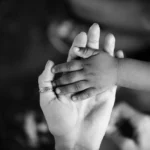
Published April 10, 2024
Most conservative women, if asked about the first wave of feminism, would voice general approval. It is seen as a rather pure approach to women’s issues, focused on protecting women and advancing political participation. Feminism’s problems, we have been led to understand, appeared only much later, sometime in the 1960s with the second wave and beyond. This general narrative has been repeated so frequently that I scarcely thought I had to research the first wave when I started writing my book The End of Woman: How Smashing the Patriarchy Has Destroyed Us. It was surprising to discover its much more coarse and colorful untold history. When my book was published, many thought it an outlier in its scrutiny of the common narrative, but the work of others continues to confirm that the first wave is not quite what we’ve been promised.
Before going into the research of others, it is important to set the stage. The first wave extended through a very long and volatile period, from roughly the late 1700s until the 1960s. This era was marked by significant cultural upheaval, including political and industrial revolutions, the Civil War, the rise of democracies and end of monarchical rule, and the emergence of socialism/communism. Questions proliferated about women, their roles as wives and mothers, their work, and their place in society.
During the first wave, large numbers of women became activists promoting suffrage, male chastity, and temperance. The women’s rights movement, however, was far from tidy and unified. Some were motivated by Christian principles; for others, especially the feminist movement’s leaders, inspiration came from Enlightenment, socialist, and esoteric thought. These new ways of thinking made the first wave far more radical and liberal than most realize. It was no prim and proper Victorian tea party.
In my book, I define feminism according to the use of the leading feminists, not as it is used in common parlance today to mean something generally pro-women or pro–political rights. Feminism, based on the explicit vision of its leaders, can be defined as an ideology characterized by three things: 1) free love or the end of monogamous marriage; 2) the occult; and 3) restructuring society, or what is now known as “smashing the patriarchy.” What I discovered in my research was that all these elements generally thought to have developed in the second wave were in fact seeded in the first. Although there was certainly a variety of thought about women generally, among feminism’s leaders, these elements were readily and shockingly apparent.
Witting and Unwitting Denunciations of First-Wave Feminism
Several reviews of my book have challenged my scholarship, critiquing my analysis of the first wave as simply reactionary anti-feminism and an idiosyncratic caricature of the first-wave thinkers. But this is not the case. Mine is not the only scholarly critique of feminism’s first wave. In 2015, Dr. Janice Fiamengo, a retired professor of English from the University of Ottawa, began The Fiamengo File, a series of YouTube videos (and, later, her Substack) focused on feminism’s devastating social effects. She also published the 2017 book Sons of Feminism: Men Have Their Say, featuring stories of men who have suffered because of feminist culture.
Tammy Peterson interviewed Fiamengo four times for her podcast about first-wave feminism (see the episodes “The Deception of Feminism,” “Modern Feminism Destroys American Women,” “Dismantling Feminism: The Untold Harm,” and “The Untold Victims of Feminism”). Fiamengo, who for years had been a devoted feminist, explains, “Everyone thinks they know something about feminism, and that little that they think they know is almost completely wrong.”
Those four episodes survey feminism from its beginnings, that is, from Mary Wollstonecraft up to the early 1900s. Fiamengo covers a vast array of historical information, context, and analysis. In “Dismantling Feminism: The Untold Harm,” she analyzes Elizabeth Cady Stanton’s Declaration of Sentiments, which is considered the foundational feminist document. Fiamengo critiques Stanton’s blanket statements, such as: “The history of mankind is a history of repeated injuries and usurpations on the part of man toward woman, having in direct object the establishment of an absolute tyranny over her.” Fiamengo argues that this claim is historically false and that history provides many, many counterexamples of men and women who did not live in this tyrannical type of relationship. Evidence abounds that there were entire communities living truly and simply Christian lives in which love and marriage were unsullied by the caricature of domination Stanton characterized.
Fiamengo also explores an area that was new for me: the activities of Dame Christabel Harriette Pankhurst and her mother Emmeline Pankhurst, a mother-daughter team generally lionized as responsible for giving British women the right to vote in 1918. The militant tactics they carried out in the early 1900s, which involved well over 1,000 women, were akin to the kind of violence we witness today in organizations like Antifa and Black Lives Matter, such as firebombing homes and destroying businesses that didn’t openly support their effort. The Pankhursts and their allies even tampered with the mail, applying chemicals to letters that led to significant burns on the hands of mailmen.
Another contribution to the critique of the first wave — this one unwittingly — is the 2022 book Hotbed: Bohemian Greenwich Village and the Secret Club that Sparked Modern Feminism by historian Joanna Scutts. Scutts, who champions feminism, discusses a secret women’s club founded in 1912 called “Heterodoxy.” It was named for the club’s only requirement: that a woman “not be orthodox in her opinion.” Scutts explains that “feminism” was a word known to people at the time, although most didn’t really know what it meant, similar to how “woke” is used today. The women of Heterodoxy spent significant time and discussion trying to sort out its meaning and how it ought to be lived.
This group of mostly affluent and well-educated women met in Greenwich Village, which was even then a hotbed for radical notions, especially the socialist and communist ideas from Eastern European and Russian immigrants. The Heterodoxy women worked to fill the void of feminism left by the deaths of leaders Elizabeth Cady Stanton and Susan B. Anthony. Like the earlier first-wave feminists featured in my book, such as Mary Wollstonecraft, the Heterodoxy club focused on defining females as a person, or human being, in contrast to the normative understanding of woman as connected to fertility, children, and husbands.
Scutts explains that Heterodoxy’s founder, unitarian minister Marie Jenney Howe, saw feminism as a quest to become “not just our little female selves, but our whole, big, human selves.” This overarching humanness meant “a changed psychology, the creation of a new consciousness in women.” This idea of changing or raising consciousness had already been used for several decades by socialists to fundamentally reshape society through women. Tinkering with the notion of woman has had diverse negative effects, such as jettisoning an understanding of human nature’s male-female complementarity and opening the door to today’s dizzying variety of genders. It also removes from women the reality of motherhood (physical, psychological, and spiritual) as the natural way in which we engage with the world. In short, and quite ironically, it has led to the prioritization of the male mode of life over a female one and a blurring of gender to the point that today most cannot even define “woman.”
Perhaps the most famous among the Heterodoxy women was socialist economist and writer Charlotte Perkins Gilman. She believed motherhood made it “impossible for women to achieve their potential, and it exposed children to the risks of cruel or neglectful parenting.” Therefore, she thought that communal living or outsourcing childcare was better for both parents and children. She also authored the book Women and Economics, which Scutts describes as a “bible for progressive young women.” Scutts adds, “The prosaic title concealed a radical vision for overturning the patriarchy, in which the author compared marriage to prostitution.”
While the names of the Heterodoxy women are little known today, their influence has been wide ranging. The 25 charter members included lesbians and bisexuals, labor radicals, and socialists. Among them were suffrage artist Lou Rogers, whose cartoons were the inspiration for Wonder Woman, and Crystal Eastman, co-founder of the American Civil Liberties Union. Their ideas of females as genderless persons, of communal or disengaged parenting, and of feminism’s general progressive vision were all used copiously by second wavers.
These examples brought to light by Fiamengo and Scutts corroborate the ones in my book. The point they illustrate could not be clearer: First-wave feminism, far from simply supporting a benign vision of voting rights and education opportunities for women, already had the much more sinister elements that we see playing out from the 1960s to today.
Is the First Wave a Model for Today?
In light of the reality of first-wave feminism, how should its thoughtful critics respond to writers — especially those who are conservative — who advocate for the first wave as a model for young women to navigate current issues? It is certainly true that women need to find healthy ways both to understand what it means to be a woman and to thrive in relationship to others, as wives, mothers, professionals, and so on.
Philosophically, the first wave’s intellectual shortcomings, which I address in greater detail in my book, are insufficient to restore what has been lost. And, more importantly, why would we want to build a new feminism (by grafting on, for example, the adjectives conservative, pro-life, or Christian) upon the broken and distorted visions of the human person and the male-female relationship that lie at the root of the problems plaguing society today? If the root is poison, and it is, no amount of decoration will make it less lethal or more true.
There is also a question of practicality. The problems women face today are vastly different from the travails of the first wave. We have rights and freedoms as well as daily conveniences that were hardly conceivable when the first wave launched. The landscape is radically different. Suffrage, temperance, and the question of whether women ought to be considered equals are hardly our pressing issues. Rather, we are plagued by the chaotic mess of the hook-up culture, sexual abuse, divorce, 28 percent of Gen Z identifying as LGBTQ, gender transitioning, willful sterilization, infertility, in vitro fertilization, and surrogate wombs. Even if feminism had been the best solution for the abuses of a bygone era, there is absolutely no reason to think that more feminism will solve the contemporary problems it has undeniably caused.
Our current ills consist of fundamentally existential questions about identity, meaning, purpose, community, family, and what it means to be a woman. As I write in The End of Woman, Matt Walsh’s definition of a woman — an adult female human — is a start, but it is not enough. We must build a coherent vision of women and femininity that distinguishes us from men by embracing the fullness of motherhood (physical, psychological, and spiritual) without denying our shared human dignity as created in the image and likeness of God.
What young women — and, really, all women — are suffering from are the effects of feminism’s successful destruction of what it targeted from the beginning: the family and faith. Trying to use the first wave, which ignited these issues, to fix this is an error that neither offers a way forward nor provides a way back to a true understanding of womanhood.
Carrie Gress, Ph.D., is a Fellow at the Ethics and Public Policy Center, where she co-directs EPPC’s Theology of Home Project. She earned her doctorate in philosophy from the Catholic University of America and is the co-editor at the online women’s magazine Theology of Home.









